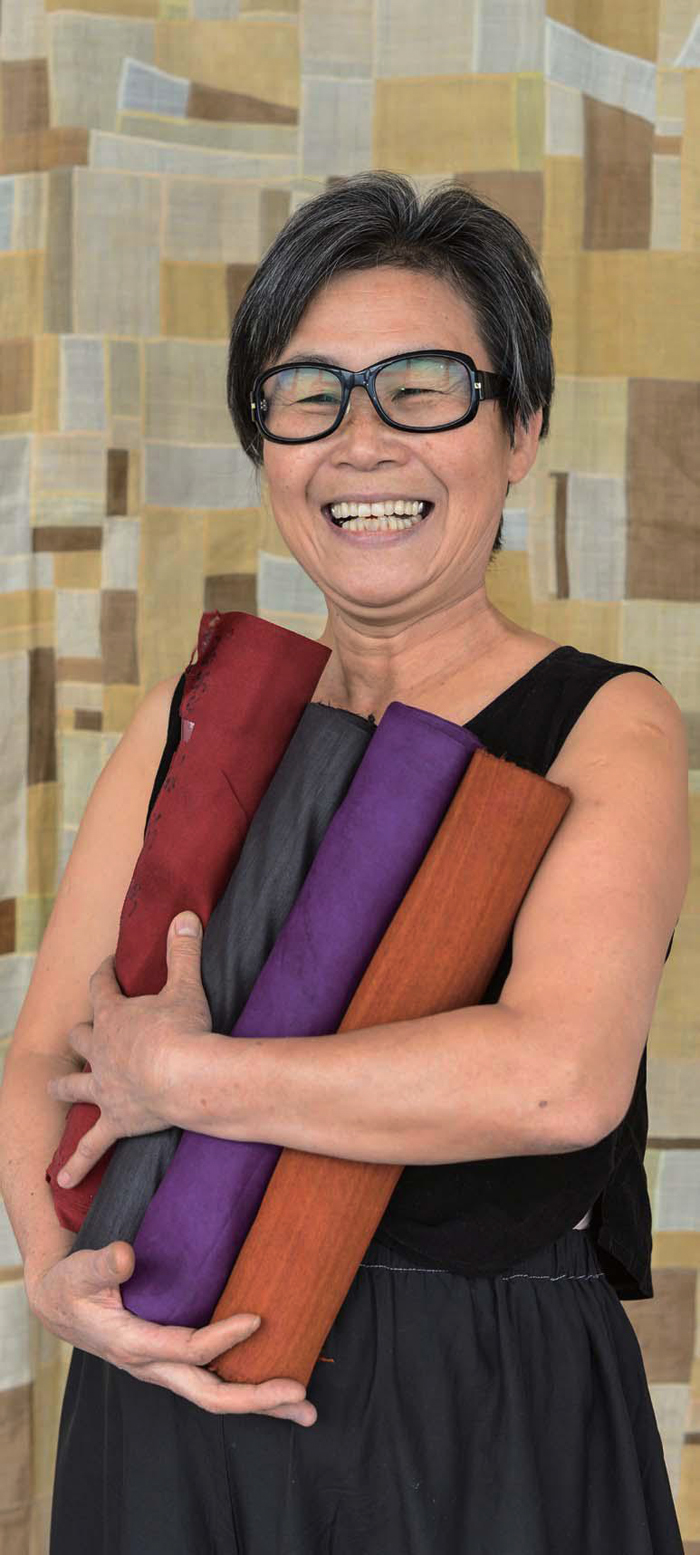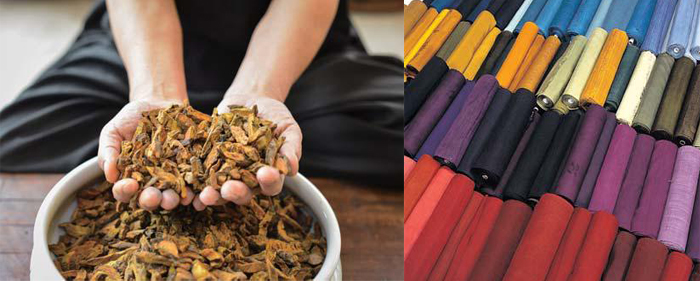View this article in another language
- 한국어
- English
- 日本語
- 中文
- العربية
- Español
- Français
- Deutsch
- Pусский
- Tiếng Việt
- Indonesian
Few people in the world are as passionate about color as natural dye artist Kim Jeong-hwa. Almost her entire life has been dedicated to producing colors from organic substances such as roots, wood, bark, or berries. Today, she is one of a handful of traditional coloring experts left in Korea.
Whether an orange sunrise over blue mountains or an image she saw in her head when she closed her eyes, she wants to give birth to the colors, to set them free while preserving them forever.

In the 1970s, Kim went to school to learn the Korean traditional art of natural dyeing but was disappointed with her education. She quickly found out that she wasn’t going to find the answers in a classroom. So from 1976 to 1988, she traveled around Korea, city to city, asking village elders about the process of making natural pigments.
During her quest, she documented the oral history of dye making in Korea. Every discovery was like uncovering a mystery from the past. Many of the coloring techniques used centuries ago have since disappeared.
According to the Korean Culture Service in New York, during the Three Kingdom Period (57 BCE–668 CE), the wearing of magnificently colored clothing was synonymous with the aristocracy. In the Baekje Kingdom (18 B.C.- A.D. 660), for instance, the wearing of purple was a right reserved exclusively for kings and high officials. In the Silla Kingdom (57 B.C.- A.D. 935), entire government agencies were set up to regulate the production of particular colors.
In 1988, Kim felt she had enough information and began dyeing cloth. She then moved on to creating works of art from the dyes, holding exhibitions, and even writing a book documenting the process, Variations on Grass, Colors and the Winds (2007).

Sacrificing for her art
Kim says proudly, “I want to learn the tradition to inherit it, master it, and advance the culture of natural dyeing.” She is so dedicated to her work that she even endures physical pain to do it.
Years of hauling heavy tubs of liquid dye and wringing out water-soaked cloth have taken a toll on her body. Her doctor told her to stop what she is doing or risk paralyzing her arms. When asked why she continues to do what she does in the face of harming her body, she says simply, “It’s so much fun!” and then laughs.
She walks to another room and grabs some colored rolls of fabric. Kim places them on the table as if they are some sort of currency, historical document, and security blanket all in one. Her voice gets serious. “The harder I work on a particular piece, the deeper and richer the color gets. It’s as if the colors are growing up before my eyes.” She pauses while finding a way to convey her feelings and then smiles. “If you have children, you’ll understand.”
For Kim, colors aren’t just something beautiful to look at; they are her religion, a representation of life itself. She points at one of her works hanging on the wall by the window. “That’s one of my favorites,” she says, referring to a mandala, the spiritual Hindu and Budhhist symbol for the universe.
“When I look at the sun and then close my eyes, that’s what I see.” Like the sun, Kim’s work originates from an organic source, something of which she is a part, yet something still greater than herself. She is Korea’s shaman of color.
* Article from Korea Magazine (December 2013)
Whether an orange sunrise over blue mountains or an image she saw in her head when she closed her eyes, she wants to give birth to the colors, to set them free while preserving them forever.
Dye artist Kim Jeong-hwa
In the 1970s, Kim went to school to learn the Korean traditional art of natural dyeing but was disappointed with her education. She quickly found out that she wasn’t going to find the answers in a classroom. So from 1976 to 1988, she traveled around Korea, city to city, asking village elders about the process of making natural pigments.
During her quest, she documented the oral history of dye making in Korea. Every discovery was like uncovering a mystery from the past. Many of the coloring techniques used centuries ago have since disappeared.
According to the Korean Culture Service in New York, during the Three Kingdom Period (57 BCE–668 CE), the wearing of magnificently colored clothing was synonymous with the aristocracy. In the Baekje Kingdom (18 B.C.- A.D. 660), for instance, the wearing of purple was a right reserved exclusively for kings and high officials. In the Silla Kingdom (57 B.C.- A.D. 935), entire government agencies were set up to regulate the production of particular colors.
In 1988, Kim felt she had enough information and began dyeing cloth. She then moved on to creating works of art from the dyes, holding exhibitions, and even writing a book documenting the process, Variations on Grass, Colors and the Winds (2007).
Rhubarbe used in dyeing (left) and rolls of dyed fabric.
Sacrificing for her art
Kim says proudly, “I want to learn the tradition to inherit it, master it, and advance the culture of natural dyeing.” She is so dedicated to her work that she even endures physical pain to do it.
Years of hauling heavy tubs of liquid dye and wringing out water-soaked cloth have taken a toll on her body. Her doctor told her to stop what she is doing or risk paralyzing her arms. When asked why she continues to do what she does in the face of harming her body, she says simply, “It’s so much fun!” and then laughs.
She walks to another room and grabs some colored rolls of fabric. Kim places them on the table as if they are some sort of currency, historical document, and security blanket all in one. Her voice gets serious. “The harder I work on a particular piece, the deeper and richer the color gets. It’s as if the colors are growing up before my eyes.” She pauses while finding a way to convey her feelings and then smiles. “If you have children, you’ll understand.”
For Kim, colors aren’t just something beautiful to look at; they are her religion, a representation of life itself. She points at one of her works hanging on the wall by the window. “That’s one of my favorites,” she says, referring to a mandala, the spiritual Hindu and Budhhist symbol for the universe.
“When I look at the sun and then close my eyes, that’s what I see.” Like the sun, Kim’s work originates from an organic source, something of which she is a part, yet something still greater than herself. She is Korea’s shaman of color.
* Article from Korea Magazine (December 2013)
Most popular
- Korea Welcome Week for foreign tourists set from April 25-May 16
- Korea.net welcomes 2025 K-influencers, Honorary Reporters
- 2025 Honorary Reporter class pledges to spread 'real Korea' worldwide
- Actor Bae Doona's first romcom in decade to hit theaters in May
- US urged to exempt tariffs on Korea in first '2+2' trade talks
